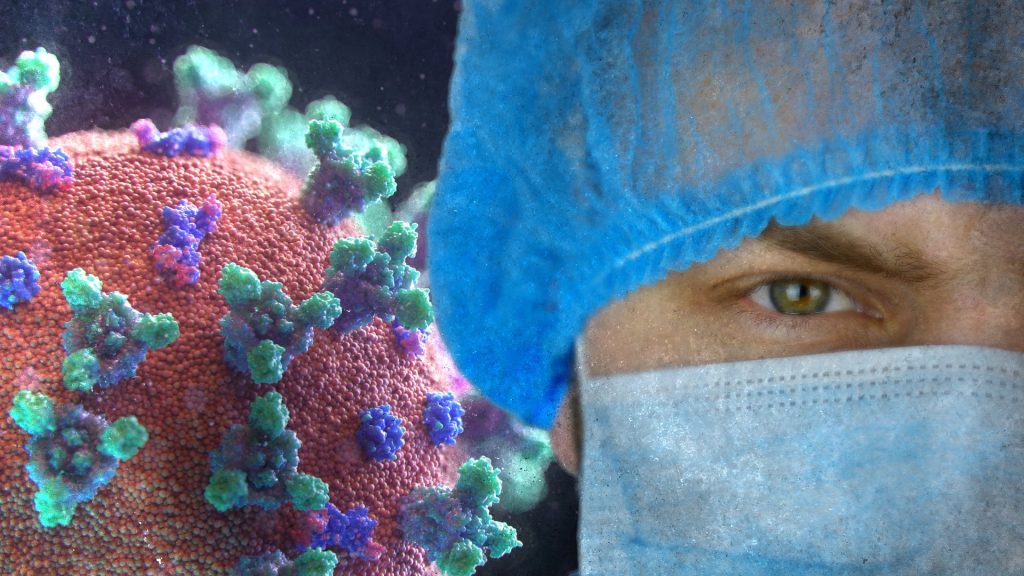
Researchers have developed an inexpensive, non-toxic coating for almost any fabric that decreases the infectivity of SARS-CoV-2 by up to 90%. It could even be developed to be applied to fabric by almost anyone.
“When you’re walking into a hospital, you want to know that pillow you’re putting your head onto is clean,” said lead author Taylor Wright, a doctoral student at the University of British Columbia. “This coating could take a little bit of the worry off frontline workers to have Personal Protection Equipment with antimicrobial properties.”
Researchers soaked fabric in a solution of an antimicrobial polymer which contains a molecule that releases reactive oxygen species when light shines on it. They then used UV light to turn this solution to a solid, fixing the coating to the fabric. “This coating has both passive and active antimicrobial properties, killing microbes immediately upon contact, which is then amped up when sunlight hits the cloth,” said senior author Professor Michael Wolf.
Both components are safe for human use, and the entire process takes about one hour at room temperature, said Wright. It also makes the fabric hydrophobic, without sacrificing fabric strength. The researchers detailed their study in American Chemical Society Applied Materials & Interfaces.
The coating can also be used on almost any fabric, with applications in hospital fabrics, masks, and activewear. While other such technologies can involve chemical waste, high energy use, or expensive equipment, the UBC method is relatively easy and inexpensive, said Wright. “All we need is a beaker and a light bulb. I’m fairly certain I could do the whole process on a stove.”
To test the coating’s antimicrobial properties, the researchers bathed treated fabric in bacterial soups of Escherichia coli and Methicillin-resistant Staphylococcus aureus (MRSA). They found that 85% of viable E. coli bacteria remained after 30 minutes, which fell to three per cent when the treated cloth was exposed to green light for the same amount of time. Similarly, 95% of viable MRSA bacteria remained, dropping to 35% under green light. No bacteria remained after four hours.
While sunlight or fluorescent lights have a lesser percentage of green in their spectrums, the team expects similar but less intense results for fabric exposed to those light sources, said Wright. “Particularly in the Pacific Northwest, it’s not always a sunny day. So, at all times you’re going to have that layer of passive protection and when you need that extra layer of protection, you can step into a lit room, or place the fabric in a room with a green light bulb – which can be found for about $35 online.”
The researchers also looked into whether the coating reduced the infectivity of SARS-CoV-2 by bathing treated fabric in a solution of the virus particles and then adding that solution to living cells to see if they could infect them. They found the passive properties were ineffective against the virus, but when treated fabric was exposed to green light for two hours, there was up to a 90% drop in the virus’ infectivity. “In other words, only one tenth of the amount of virus signal was detected on cells infected with the UV-fabric and light treated virus”, says co-author Professor François Jean.
The team found they needed an 18cm2 piece of fabric to kill microbes with material containing 7% of the active ingredient by weight, but that increasing this to 23% increased the effectiveness of the fabric at four times less material, said Wright.
Researchers also found that keeping the fabric under green light for more than 24 hours failed to produce the sterilising forms of oxygen, highlighting an area for further study. This is a similar effect to the colour fading on clothing after being exposed to sunlight for too long.
“Biomanufacturing face masks based on this new UBC technology would represent an important addition to our arsenal in the fight against COVID, in particular for highly transmissible SARS-CoV-2 variants of concern such as Omicron”, said Prof Jean. The coating can also be used for activewear, with an ‘anti-stink’ coating applied to areas where people tend to sweat, killing off the bacteria that makes us smell. Indeed, hospital fabric and activewear companies are already interested in applying the technology, and the university has applied for a patent in the United States, said Prof Wolf.
Source: University of British Columbia

